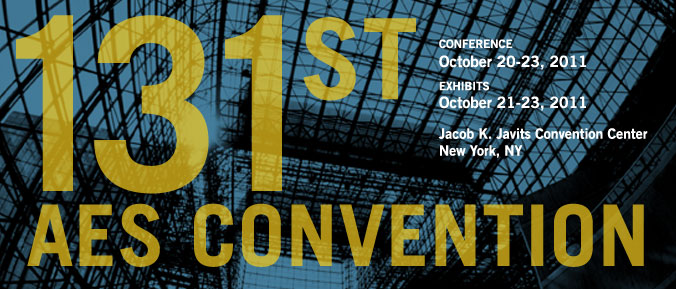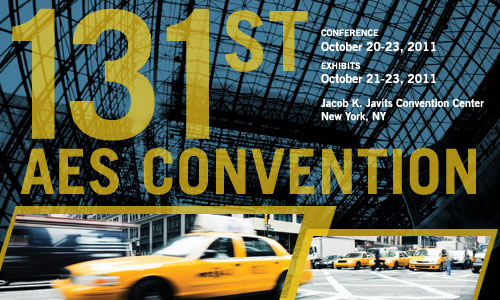
AES New York 2011
Engineering Brief EB4
EB4 - Signal Processing
Saturday, October 22, 12:00 pm — 12:45 pm (Room: 1E09)
Chair:
Robert Maher, Montana State University - Bozeman, MT, USA
EB4-1 A New Method for Evaluating Loudspeaker Efficiency in the Frequency Domain—Joe Jensen, Technical University of Denmark - Lyngby, Denmark
The Constant Input Power (CIP) frequency response is proposed as a new method to evaluate loudspeaker efficiency in the frequency domain. Through a simulation study it is demonstrated how the CIP response can be a valuable tool when designing loudspeakers for which high efficiency is a priority.
Engineering Brief 34 (Download now)
EB4-2 Wave Field Synthesis by Multiple Line Arrays—Matthew Montag, Colby Leider, University of Miami - Coral Gables, FL, USA
Wave field synthesis (WFS) is a spatial audio rendering technique that produces a physical approximation of wavefronts for virtual sources. Large loudspeaker arrays can simulate a virtual source that exists outside of the listening room. The technique is traditionally limited to the horizontal plane due to the prohibitive cost of planar loudspeaker arrays. Multiple-line-array wave field synthesis is proposed as an extension to linear WFS. This method extends the virtual source space in the vertical direction using a fraction of the number of loudspeakers required for plane arrays. This paper describes a listening test and software environment capable of driving a loudspeaker array according to the proposed extension, as well as the construction of a modular loudspeaker array that can be adapted to multiple-line configurations.
Engineering Brief 35 (Download now)
EB4-3 Playback Disappointment in Linear PCM Recording Systems—John “Beetle” Bailey, The Drive Shed - Recording Studios - Toronto, Ontario, Canada
As an “in-the-trenches” music recording engineer, my workflow has evolved to essentially an all in-the-box approach, with the exception of some external DSP. After spending many hours on a mix, I always get a strong feeling that when I finally print my mix to a stereo track in my workstation, or to a hardware-based digital recorder and play back the resulting 24-Bit-96-kHz WAV file, that it’s just not the same. A sense of disappointment. It seems to lack depth, reverb tails fall off, the transient response seems dulled, and an overall “graininess” to the mix. This paper and presentation will demonstrate the differences by way of 5.6-MHz DSD null tests and explore the difference between a live digital stream, and the disappointing playback of that digital stream that has been captured by a recorder in WAV file format. Upon demonstrating the problem, I will discuss possible solutions and workarounds I have used.
Engineering Brief 36 (Download now)
Information Last Updated: 20111005, mei

